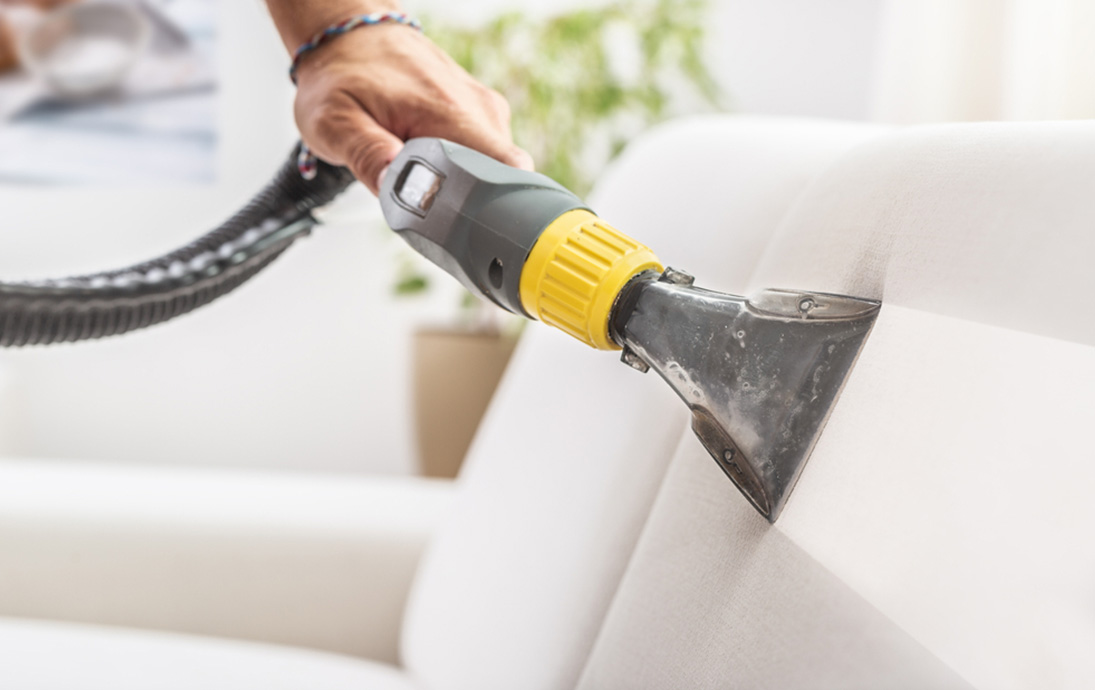Sofas contain a myriad of germs from daily use, everything from foodborne illnesses to influenza viruses. To keep your family healthy, it’s crucial to disinfect your sofa fully and properly on a regular basis.
Follow these comprehensive tips to sanitize all surfaces and kill any lurking pathogens.
Why Disinfect Your Sofa?
Sofas are prime locations for germs to accumulate:
- Heavy usage – Constant contact spreads microbes rapidly.
- Spills and stains – These allow germs to feed and multiply.
- Fabric pores – Microbes become trapped and thrive in the fibers.
- Dark moist areas – Under cushions and crevices are ideal breeding grounds.
- High-touch surfaces – Armrests and backrests are covered in germs from hands.
- Proximity to food – Eating on the sofa transfers germs to surfaces.
- Shedding and odors – Pets and humans spread germs through skin cells and bodily excretions.
Regular disinfection kills microbes and curbs transference, helping safeguard your family’s health.
Vacuum All Surfaces and Crevices
The first critical step is to use a vacuum hose attachment to thoroughly clean all fabric surfaces, seams, tufts and crevices.
- Adjust to the lowest height setting and high suction power.
- Start by vacuuming the arms, backrest, and seating areas using overlapping strokes.
- Lift cushions to vacuum beneath them as well as the sofa base.
- Use crevice tools to vacuum inside seams, welting, skirts, and any tufted buttons or ornamental details.
- Extend the hose to reach under the sofa frame and into all corners.
- Use a soft brush nozzle for cushions to lift debris from fabrics.
- When finished, immediately dispose of the vacuum bag or empty canister contents.
Vacuuming first is vital preparation since it lifts away germs, allergens, and soils that impede disinfecting.

Pre-Treat Any Stains and Soils
Scan the upholstery for any dried spills, sticky spots, or heavy soils. These organic materials act as food sources allowing microbes to rapidly multiply.
- Mix an enzymatic cleaner or mild upholstery shampoo concentrate with warm water.
- Use a soft bristled scrub brush and gently blot the solution into affected areas.
- Carefully dab from the edges inward to prevent spreading stains.
- Allow to soak 5 minutes, then blot with clean water and a dry cloth.
- Repeat until the stain is fully lifted. Allow the area to completely dry.
- For tough dried spills, use an upholstery spotting knife to gently lift debris before scrubbing.
Pre-treating soiled areas removes contaminants and prepares the surface for disinfection.
Select an Effective Disinfectant
Choosing the right disinfectant ensures pathogens are neutralized quickly and safely:
- Bleach solutions kill most bacteria, viruses and molds. Use extreme care on fabrics, starting with highly diluted solutions.
- Quaternary ammonium detergents destroy a wide range of microbes with low toxicity.
- Isopropyl alcohol solutions provide fast broad-spectrum disinfection. Test first as they may fade dyes.
- Hydrogen peroxide cleaners break down germ proteins without caustic chemicals.
- Thyme is a natural disinfectant derived from thyme oil, effective against mold and fungi.
- Always spot test disinfectants first in an inconspicuous area and allow fabrics to fully dry.
Disinfect All Surfaces
With your chosen disinfectant ready, systematically treat all upholstery surfaces:
Wear protective gloves and shake the bottle well before each use.
Mist or wipe the disinfectant over the entire sofa including arms, back, seating surfaces and undersides. Reapply if any areas are missed.
Use a clean, soft cloth to gently distribute and work the solution into the nap.
Carefully lift and disinfect under each cushion, treating both sides.
Follow seam lines to ensure crevices and piping are reached. Disinfect tufted buttons as well.
Allow the disinfectant to remain visibly wet on surfaces for the product’s recommended contact time to kill pathogens.
Once the dwell time is reached, use clean absorbent cloths to pat dry. Allowing upholstery to air dry fully prevents mold growth.
Systematically covering all areas ensures no niche is left untreated.
Freshen and Deodorize with Natural Solutions
For ongoing odor control between disinfection, use natural deodorizers:
- Baking soda absorbs odors – sprinkle liberally over upholstery and let sit 30 minutes before vacuuming.
- White vinegar removes odors and deters mold growth – mix with water in a spray bottle.
- Activated charcoal pulls odors from the air – set mesh bags under cushions.
- Essential oils like lemon, eucalyptus, and tea tree freshen air – add a few drops to water in a spray bottle.
- Natural solutions maintain freshness between disinfection without adding toxic chemical fumes.
Maintain a Regular Disinfection Schedule
To prevent germ buildup, disinfect your sofa at appropriate intervals:
- Weekly for high traffic areas – armrests, backrest, seating surfaces
- Monthly or quarterly for entire sofa
- After illnesses – disinfect thoroughly if anyone was sick
- When introducing new pets – helps avoid territorial marking
- Before placing into storage – kill mold, mildew and pests
- After water damage – prevent mold growth
Consistent disinfection keeps microbes at safe levels and helps extend the usable life of your sofa.
With some diligent effort, you can protect your family’s wellbeing and keep your sofa looking and smelling fresh. Follow these comprehensive disinfection tips and your sofa will provide a clean, healthy oasis for relaxing and connecting with loved ones.
